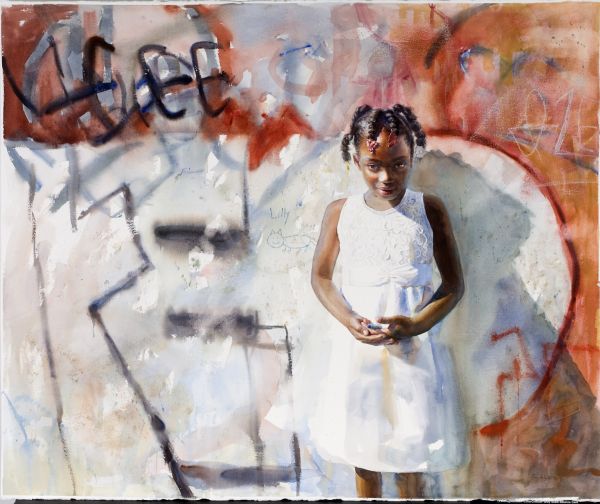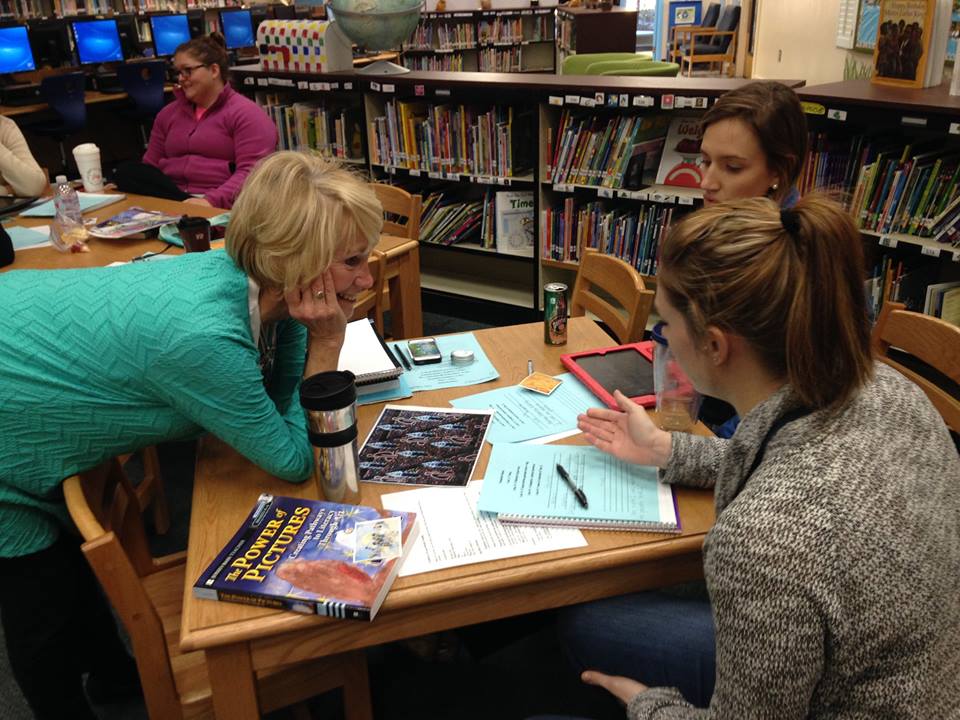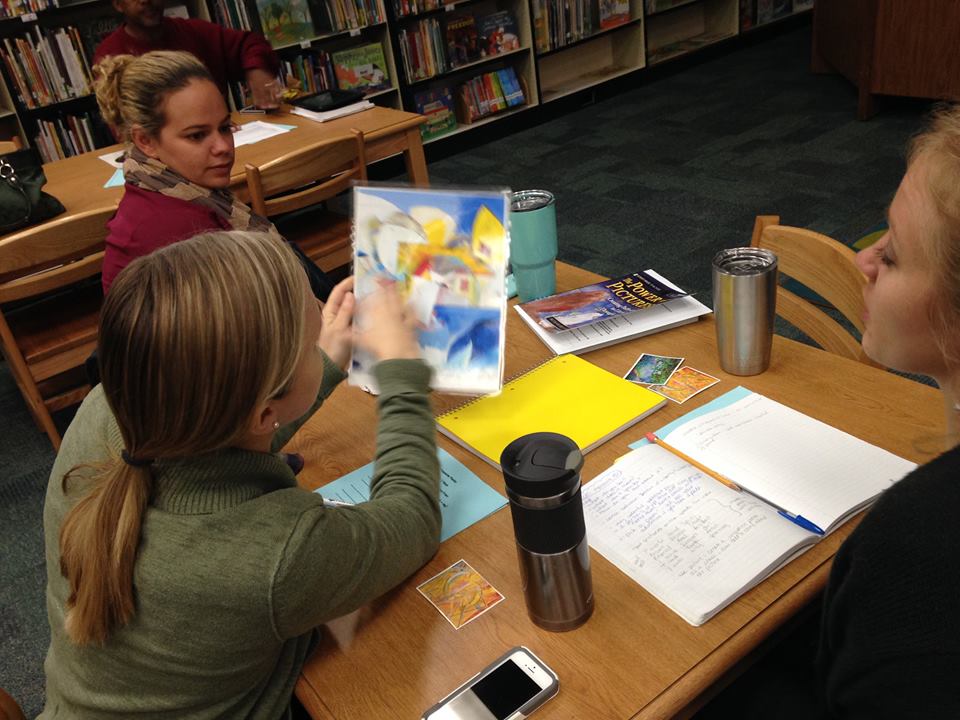A group of teachers sits clustered around a vibrant image of a little girl in a white dress standing in front of a wall covered by graffiti.
“What do you think this means?” asks the workshop leader.
“I think this represents innocence,” says one teacher.
“Hmm, I think it looks more like the loss of innocence,” says another.
“What do you see in the painting that makes you think so?” asks the leader.

A lively conversation ensues about visual messages, evidence, symbolism, meaning, and how artists use images to communicate ideas. This conversation is the kind of conversation being held among teachers in local schools as they learn creative teaching techniques that will engage their students in building understanding through visual art. Due to generous funding provided by Arts, etc., Engaging Creative Minds (ECM) has partnered with the Gibbes Museum of Art to provide professional development for teachers at schools on Johns Island, SC.

Engaging Creative Minds is a local non-profit that partners with the local arts community and school districts to bring creativity and innovation to the classroom. Arts, etc. is an organization of Kiawah and Cassique women committed to supporting the arts. The charitable organization has provided ECM with a grant to support local teachers and equip them with arts integrated teaching strategies.
Teaching children to “read” a piece of art mimics the process they use to read a piece of text. They have a chance to try out thinking skills such as identifying the main idea, noticing details, citing evidence, inferring, and many other skills we ask children to use with text. Even very young children can start practicing this kind of thinking with images before they have the reading skills to do it with text. It is very empowering for them.

Faculties from Angel Oak Elementary School and Haut Gap Middle School have already received professional development as a result of the partnership between ECM and the Gibbes Museum of Art. The response has been very positive. Many of the teachers have requested support in locating artistic images that correspond to their curriculum so that they can utilize art-based teaching strategies with their students. Elise Detterbeck, Gibbes Museum Educator, and ECM staff are working together to resource teachers with appropriate images. “These strategies are so engaging,” said one local teacher, “I know my kids will really respond to these images.” The workshops help teachers learn strategies for “making meaning” from images so they can lead their students through similar experiences. They also learn strategies for integrating writing as a response to the art.
—Susan Antonelli, Education Director for Engaging Creative Minds, and guest blogger
In addition to professional development workshops for teachers, Engaging Creative Minds provides in-school programs in 20 Charleston County Schools and hosts Summer STEAM Institutes at The Citadel and the College of Charleston.
Published February 12, 2016

